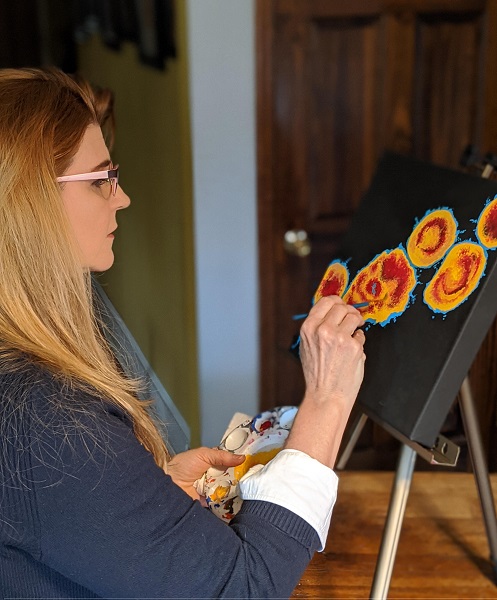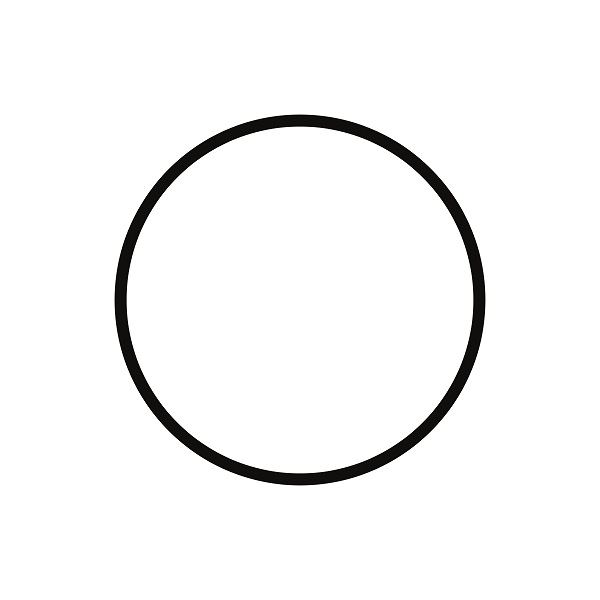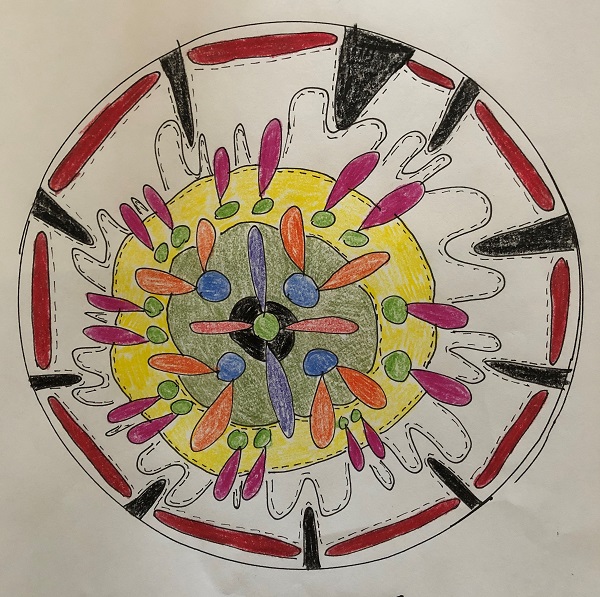Art Therapy Graduate Student Conducts an Online Mindful-Art Session for Healthcare Professionals
May 12, 2020
 Emily Wexler, a graduate student at Drexel University College of Nursing and Health Professions, is working toward a master’s degree in Art Therapy and Counseling. After taking Michele Rattigan’s Mindfulness and Clinical Practice course, she discovered what she learned from Rattigan, MA, ATR-BC, NCC, LPC, an associate clinical professor in Creative Arts Therapies, she could apply to help a variety of health professionals with stress.
Emily Wexler, a graduate student at Drexel University College of Nursing and Health Professions, is working toward a master’s degree in Art Therapy and Counseling. After taking Michele Rattigan’s Mindfulness and Clinical Practice course, she discovered what she learned from Rattigan, MA, ATR-BC, NCC, LPC, an associate clinical professor in Creative Arts Therapies, she could apply to help a variety of health professionals with stress.
Reflecting on the internship Wexler had in pediatric medicine at Cooper Hospital, she witnessed providers working long hours without taking a break or tending to themselves. “I started to notice the different ways that people could be affected when we don't take that break,” Wexler remarked. Her original plan was to work with her team at Cooper then conduct a one-time mindful art experience in the art studio in Three Parkway with physician assistant students. “I'd have all the materials and would be able to do something a little more complex with watercolors and markers,” said Wexler. She also wanted to make it an experience that physician assistant students could continue at home. “Not all students will have watercolors at home, so thinking about what materials people have at home, I landed on pencil or pen and paper,” she shared. Those are pretty much the simplest art materials and most people will have that readily available. Then COVID-19 happened.

Considering healthcare professionals in the current highly stressful climate and her understanding of mindful art-creating, Wexler, with some guidance from Rattigan, developed an online version of her original idea and invited those working in hospitals or directly or indirectly with COVID patients and their families to participate.<
It’s very common, suggested Rattigan, for healthcare workers to push their own personal wellness to the back burner. “I think when people fall into a caretaking role, a couple of different things happen. Because it’s what we’re taught, we put our own values, judgments and biases aside to be fully present for another human being,” she asserted. The other part, speaking as a psychotherapist and a counselor, Rattigan said that “it's not about us,” despite bringing themselves into that relationship to help other people. “It's really important for a person to truly focus on their own health journey. We must avoid exploiting clients and bringing in our own ‘isms’ and stuff into the care process,” Rattigan added. Working through the day focused on each person helps protect that patient because the caregiver can separate themselves from the patient and work objectively. Rattigan contends that healthcare professionals can never be 100 percent objective and “if we don't tend to the parts of ourselves that get wounded or vicariously traumatized and push it somewhere else, it will build up to the point where it's affecting many parts of our lives—behavior, work, sleep patterns, relationships, lack of nutrition or overeating, etc.” That is the point at which it's okay to say “I need to take a step back and breathe. I need to fill that need for myself.” In other words, if we all draw from our wells of compassion—keep giving and giving to others—and never replenish it for ourselves, there's nothing left for us to give and there's nothing left for ourselves. “And that's the point of complete, utter burnout,” Rattigan stated.
 With the elevated level of stress healthcare workers typically experience turned up even higher by COVID-19 and its open-endedness, Wexler directed her knowledge of mindful art-making in developing a way for them to take a pause—that much needed breath. In April, 40 doctors, nurses, physician assistants and mental health providers Zoomed in for a one-hour mindful art session. Wexler led the group through a mindfulness check-in to help everyone focus on the present moment before she described what would happen during the rest of the session. Beginning with an explanation of a self-compassion mantra, she reminded participants why it’s important to extend the same compassion given to others to ourselves then asked them to create their own mantra. “It should include a statement of self-compassion, a statement of shared human suffering, one statement of self-kindness and your intention,” Wexler shared. “An example could be: ‘I am not perfect. Nobody else is perfect. It is okay to make mistakes. I will continue to try my best and to be my best.’” She instructed them to write it down before proceeding toward the next part—creating a self-compassion mandala using the template she provided, and their own materials like pens, pencils and markers.
With the elevated level of stress healthcare workers typically experience turned up even higher by COVID-19 and its open-endedness, Wexler directed her knowledge of mindful art-making in developing a way for them to take a pause—that much needed breath. In April, 40 doctors, nurses, physician assistants and mental health providers Zoomed in for a one-hour mindful art session. Wexler led the group through a mindfulness check-in to help everyone focus on the present moment before she described what would happen during the rest of the session. Beginning with an explanation of a self-compassion mantra, she reminded participants why it’s important to extend the same compassion given to others to ourselves then asked them to create their own mantra. “It should include a statement of self-compassion, a statement of shared human suffering, one statement of self-kindness and your intention,” Wexler shared. “An example could be: ‘I am not perfect. Nobody else is perfect. It is okay to make mistakes. I will continue to try my best and to be my best.’” She instructed them to write it down before proceeding toward the next part—creating a self-compassion mandala using the template she provided, and their own materials like pens, pencils and markers.
The mandala was specifically chosen for this activity because they are done in the circular form to create balance, wholeness and a sense of completion. “Circles are containers in which one can put all their feelings of overwhelm and stress to alleviate that pressure,” Wexler offered. The group took 30 minutes to create their pieces in whatever way felt right with directions to notice and observe rather than judge. Rattigan and Wexler provided support with Rattigan suggesting doodling if anyone was stuck. “Doodling takes that stress out of it. If it’s a doodle, it doesn't have to look like anything. See what comes of it,” Rattigan contributed.
An added benefit of this online platform for those who might feel nervous about making art in front of others is that no one can see what they’re doing. Wexler commented that if someone is making something and hates it, only they see it. “They don't have to stress about it. They don’t know the other participants or what they are thinking. This setting helps, as does encouraging people to understand that this is their art,” Wexler said.
After the allotted time, participants were invited to share about the experience, what they learned and how it felt to do it. A theme emerged—seldom did they take a pause during their day or do something for themselves that could replenish their wells of compassion. They learned how simple it is to do a very quick mindful check-in and how effective making art can be to connect with that present moment and let go of what they’d been doing.
In this time of healthcare workers being pushed to their limits, unpredictability of this pandemic and their worry about their families, people are struggling. This tool provides people an opportunity to stop, even briefly, and take a few minutes for themselves to recharge with the added bonus that it can be done anywhere.
Written by Roberta S. Perry
The Mindful Check-in Wexler did is the 5,4,3,2,1 technique shown below.
Settle into your chair, feeling the ground under your feet, resting your arms
on your lap or wherever they feel comfortable.
Bring your attention to the present moment and focus on the space around you, then NOTICE:
5 things you can see
4 things you can feel
3 things you can hear
2 things you can smell
1 thing you can taste
Take three more deep breaths.
Wexler shared a video she made for school children on how to make a mindfulness jar. It’s a fun activity kids can do at home and use regularly to settle.
